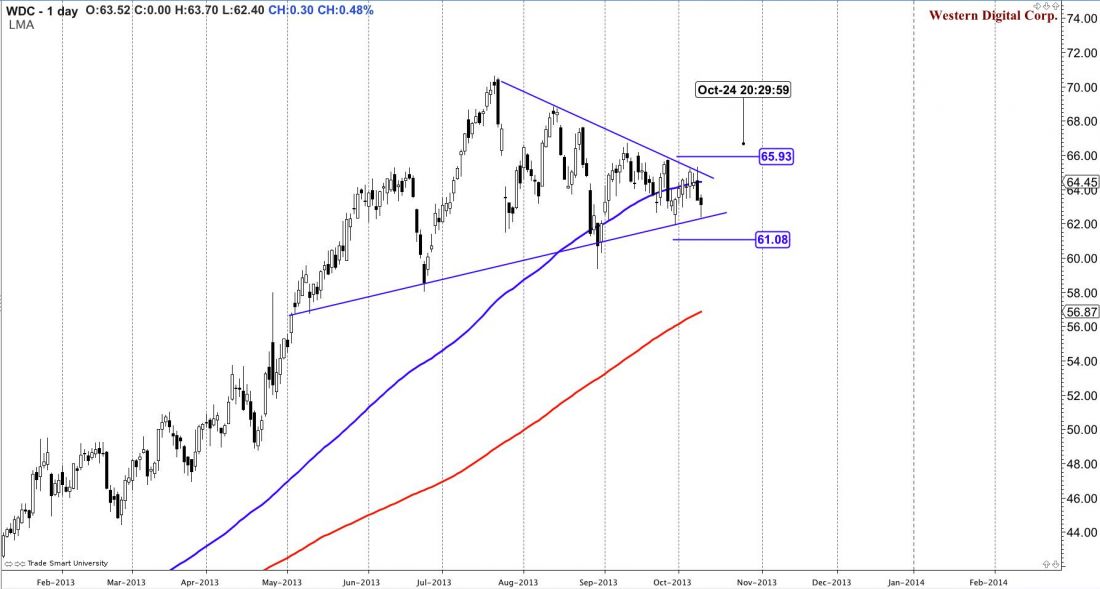Earnings season is just around the corner. Many stocks will be quite volatile on the day earnings are announced, “gapping” up or down over night. These moves can be fun if you are ready.
For option traders, or someone who enjoys the thrill, earnings can be quite exciting. I personally feel, as long as a trader significantly mitigates risk and doesn’t “bet the farm,” there are a few earnings strategies that can be used to combat the wild swings in earnings.
A GOOD STRATEGY
The one I will cover in this article is the “strangle.” This strategy can be used over earnings and it can also be used during a huge announcement that investors “know” will cause the market to move wildly in one direction or the other.
However, traders just aren’t sure which direction. In the strangle strategy, you buy a call and you buy a put option. Let me give you an example. Take this stock: Western Digital Corp. (WDC). See Figure 1 below. It appears to be forming a large symmetrical triangle over the course of a few months. The stock has lower highs (so sellers are eager to sell it) and the stock has higher lows (the buyers are eager to buy it).

This causes a great balance, a trading “impasse” if you will. Ironically enough, earnings are right around the corner, too. Therefore, there is a chance for a massive move in one direction or the other. Which one will it be? I’m not sure.
GET READY FOR A BIG MOVE
A trader could implement the strangle strategy. The trader always wants to buy enough time so not to be overly effected by theta decay and the implied volatility decreasing from the option after the earnings release. If a $60 put is purchased (which is out of the money) and a $65 call is purchased (which is out of the money) with expirations in December, total risk would be $3.00 (for the put) and $3.50 (for the call) or $6.50 per contract. If one contract is purchased, that’s a $650 risk (plus commission).
The stock needs to move approximately 6-7% for this strategy to really play out. The stock could trade sideways, and some option premium could be lost on both options. The goal here is for the stock to gap in one direction. Let’s say the stock gaps down bearish. The call would be sold for a loss (likely a 50-70% loss per contract) and the put would increase approximately the same amount and maybe a little more. I
RISK/REWARD
If the stock gaps down far enough, the call option can only lose 100% of its premium, right? How high could the put go? Well, that’s where this strategy becomes fun. If the WDC gaps down to $50 because of earnings, the put would be worth approximately $13.00; worst case scenario, this would be over a 400% ROI.
Again, the max risk on this trade is $6.50 per contract if the stock doesn’t move at all. The full premium of both options could be lost, assuming you simply don’t sell them to close before expiration.
Best case scenario, the stock moves quite decidedly in one direction or the other. One option has to be sold for a loss and the other option is usually held onto, while it gains in value, hopefully making back the loss of the other option, if not more.
If you are unfamiliar with this strategy, please practice it virtually. Earnings season and the debt ceiling conversations that are coming around the corner will be a marvelous time to practice this strategy and see if could become your specialty.
= = =




